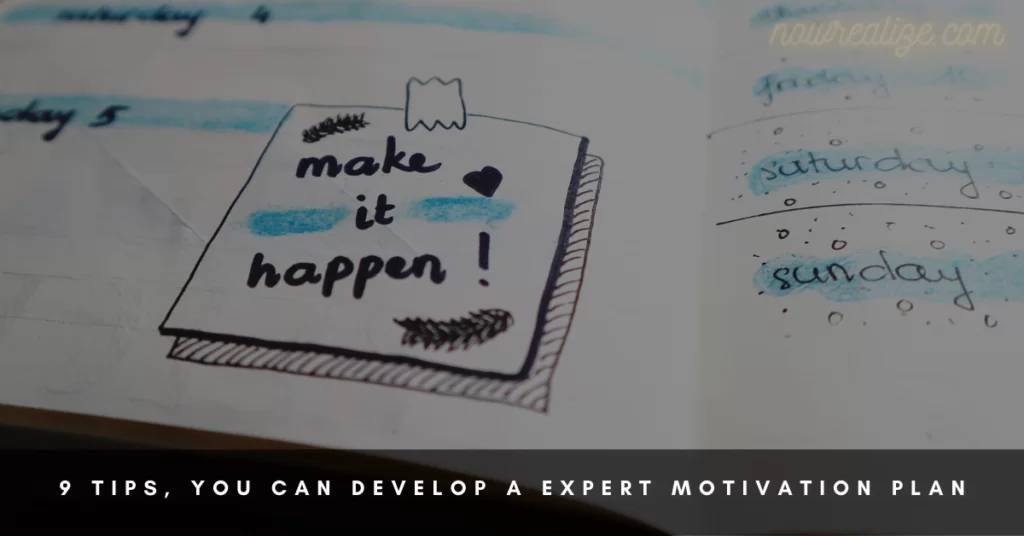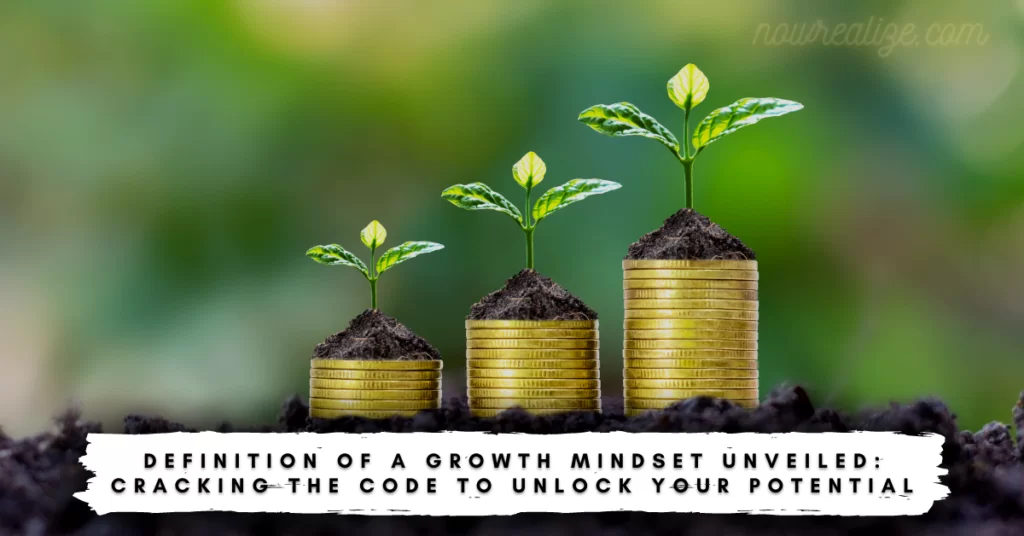
Table of Contents
- Section 1: Introduction
- Section 2: Understanding Mindset
- Section 3: Cracking the Code to a Growth Mindset
- Section 4: Developing a Growth Mindset
- Section 5: Overcoming Obstacles and Roadblocks
- Section 6: Applying a Growth Mindset in Different Areas of Life
- Section 7: Case Studies and Success Stories
- Section 8: Conclusion
Section 1: Introduction
Have you ever wondered why some people seem to effortlessly achieve success while others struggle to make progress? The answer lies in their mindset. The Definition of a Growth Mindset has gained significant attention in recent years, revealing the power of our beliefs and attitudes in shaping our lives.
In this comprehensive article, we will delve into the definition of a growth mindset and explore how it can be the key to unlocking your potential. By cracking the code to a growth mindset, you will gain valuable insights into how to cultivate it and apply it to all areas of your life.
Section 2: Understanding Mindset
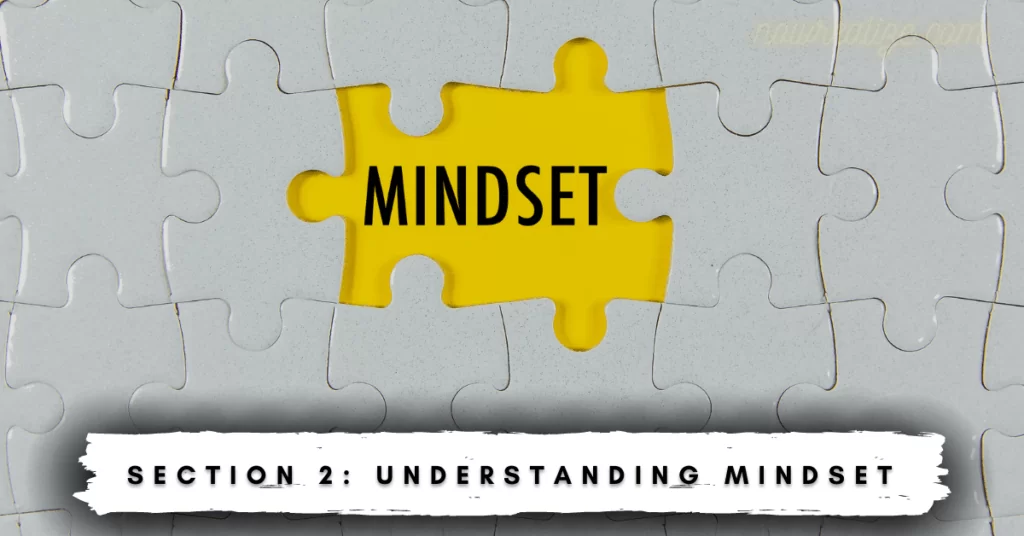
To grasp the concept of a growth mindset, it’s essential to first understand the two main types of mindsets: the fixed mindset and the growth mindset. A fixed mindset is characterized by the belief that our abilities and intelligence are fixed traits, predetermined and unchangeable. A growth mindset, on the other hand, is the conviction that our skills can be improved through hard work, perseverance, and a willingness to learn.
Individuals with a fixed mindset tend to avoid challenges, fearing failure and the potential damage it can do to their self-esteem. They often perceive the effort as fruitless, viewing it as a sign of incompetence. In contrast, those with a growth mindset embrace challenges, see effort as a necessary step towards mastery, and view failure as an opportunity for learning and growth.
Section 3: Cracking the Code to a Growth Mindset
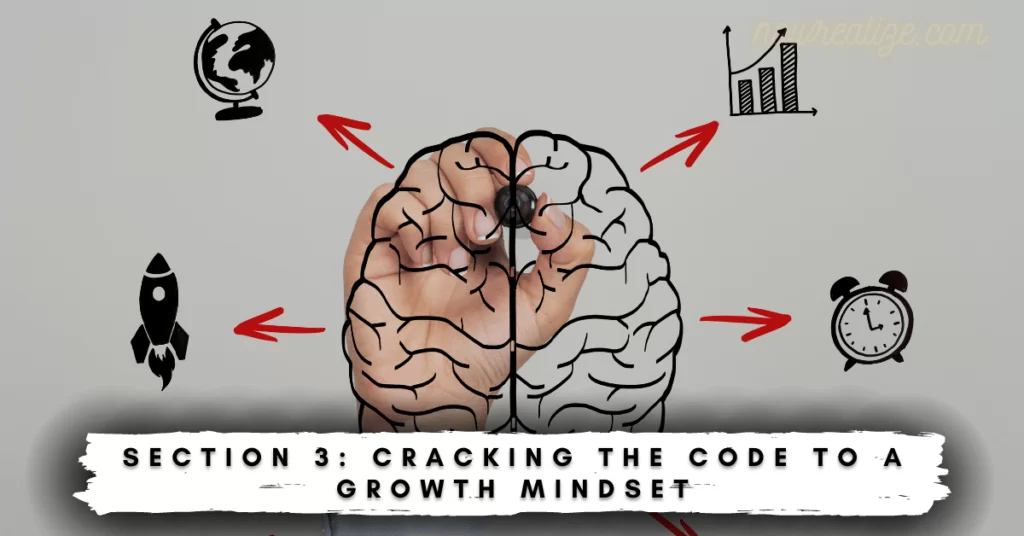
Now that we understand the fundamental differences between a fixed mindset and a growth mindset, let’s explore the key elements of a growth mindset that can unlock your potential:
Embracing Challenges:
A growth mindset encourages you to step out of your comfort zone and embrace challenges as opportunities for growth. It is through facing and overcoming challenges that we develop new skills and expand our capabilities.
Valuing Effort and Perseverance:
A growth mindset recognizes the value of effort and perseverance. It acknowledges that mastery and success are the result of consistent hard work and dedication. With a growth mindset, you understand that setbacks and obstacles are part of the learning process, and you persist in the face of adversity.
Learning from Failure:
Failure is not seen as a reflection of your worth or abilities, but rather as a stepping stone towards improvement. A growth mindset enables you to extract valuable lessons from failure, adjust your approach, and try again with newfound knowledge.
Seeking and Embracing Feedback:
Feedback is an invaluable tool for growth and development. Those with a growth mindset actively seek feedback from others, recognizing it as an opportunity to gain new perspectives and refine their skills.
Celebrating the Success of Others:
Instead of feeling threatened or envious of others’ achievements, a growth mindset allows you to genuinely celebrate their success. You see the success of others as an inspiration and a reminder that growth and progress are attainable.
Section 4: Developing a Growth Mindset
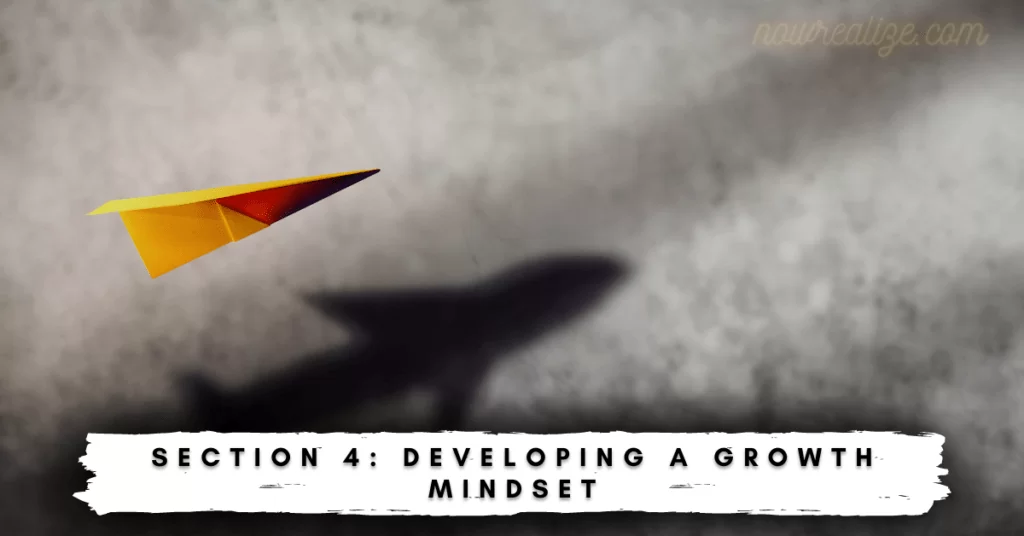
Now that we have unveiled the secrets of a growth mindset, let’s explore practical strategies to cultivate and develop this mindset:
Cultivate Self-Awareness:
Start by becoming aware of your mindset tendencies. Notice when you slip into a fixed mindset and consciously choose to adopt a growth mindset instead. Self-reflection and mindfulness can help you identify and challenge limiting beliefs.
Challenge Negative Self-Talk:
Replace self-limiting thoughts and beliefs with positive affirmations. Reframe challenges as opportunities for growth and rewire your inner dialogue to focus on progress and learning.
Set Realistic Goals:
Set specific, attainable goals that reflect your values and desires. Break them down into smaller, actionable steps to maintain motivation and track your progress.
Embrace Discomfort:
Step outside of your comfort zone and embrace new experiences that stretch your abilities. Growth occurs when you push past your perceived limits and embrace the unknown.
Learn from Setbacks:
When faced with setbacks or failures, analyze what went wrong and extract valuable lessons. Use this knowledge to adjust your approach and move forward with resilience.
Surround Yourself with Growth-Oriented Individuals:
Seek out relationships and communities that support and encourage growth. Surrounding yourself with like-minded individuals who embody a growth mindset will foster a positive and inspiring environment.
Continuously Seek Learning Opportunities:
Cultivate a thirst for knowledge and continuous learning. Seek out new experiences, engage in lifelong learning, and expose yourself to different perspectives. This mindset of curiosity and growth will keep you open to new possibilities.
By implementing these strategies consistently and persistently, you can develop a growth mindset that will unlock your potential and propel you toward personal and professional growth.
Section 5: Overcoming Obstacles and Roadblocks

While embracing a growth mindset is transformative, it’s not without its challenges. Here are some common roadblocks you may encounter and strategies to overcome them:
Self-Doubt:
Cultivate self-compassion and challenge self-doubt by focusing on your progress and growth. Remind yourself of past successes and the potential for future growth.
Fear of Failure:
Reframe failure as a necessary component of the learning process. Embrace the lessons learned from failure and remember that every successful person has faced setbacks along their journey.
Comparison Trap:
Avoid comparing yourself to others and instead, focus on your personal growth and progress. Everyone has their unique path, and your journey is a reflection of your capabilities and potential.
Lack of Motivation:
Stay motivated by setting meaningful goals, visualizing your desired outcomes, and celebrating small wins along the way. Surround yourself with inspiration and remind yourself of the purpose behind your growth journey.
Section 6: Applying a Growth Mindset in Different Areas of Life
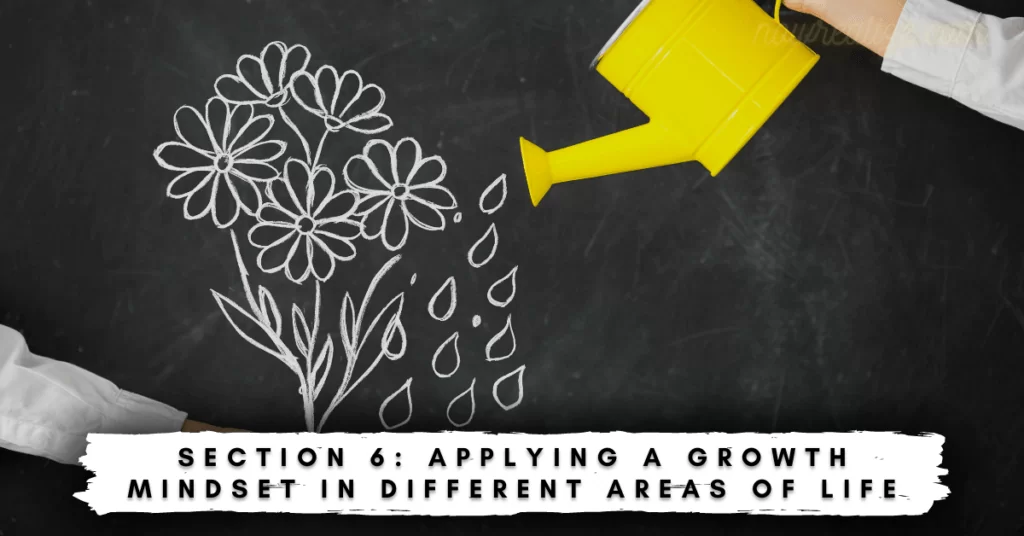
A growth mindset is not limited to a specific domain; it can be applied to various aspects of life:
Education:
Embracing a growth mindset in education allows you to approach learning with enthusiasm and a willingness to tackle challenging subjects. It enhances your ability to absorb new information, develop critical thinking skills, and persist in the face of academic difficulties.
Career:
Adopting a growth mindset in your career can lead to increased adaptability, innovation, and resilience. It empowers you to embrace new opportunities, learn new skills, and navigate professional challenges with a growth-oriented perspective.
Relationships:
Applying a growth mindset in relationships fosters empathy, understanding, and open communication. It enables you to recognize that relationships require effort, growth, and compromise, leading to healthier and more fulfilling connections.
Personal Development:
A growth mindset is a powerful tool for personal development and self-improvement. By embracing continuous growth and learning, you can develop new skills, enhance your strengths, and achieve your goals.
Section 7: Case Studies and Success Stories

To illustrate the transformative power of a growth mindset, let’s explore some inspiring case studies and success stories:
Thomas Edison:
Despite facing numerous failures while inventing the light bulb, Edison maintained a growth mindset and famously said, “I’ve just discovered 10,000 ways that will not work.” His dedication and enthusiasm to study eventually led to his historic triumph.
Serena Williams:
One of the greatest tennis players of all time, Serena Williams has always embraced a growth mindset. She continuously seeks ways to improve her game, embraces challenges, and learns from setbacks, making her an unstoppable force on the court.
Michael Jordan:
Considered the best basketball player of all time, Michael Jordan was initially cut from his high school basketball team. However, he used that failure as motivation to work harder and develop his skills. His growth mindset fueled his relentless pursuit of greatness.
Section 8: Conclusion

In conclusion, understanding the definition of a growth mindset and applying its principles can unlock your true potential and pave the way for personal and professional growth. By embracing challenges, valuing effort, learning from failure, seeking feedback, and celebrating the success of others, you can cultivate a growth mindset that propels you toward success.
Remember, developing a growth mindset is a journey that requires commitment, self-reflection, and perseverance. But the rewards are immeasurable. So, embrace the power of a growth mindset, crack the code, and unlock your limitless potential. Start your growth mindset journey today and watch yourself thrive.



